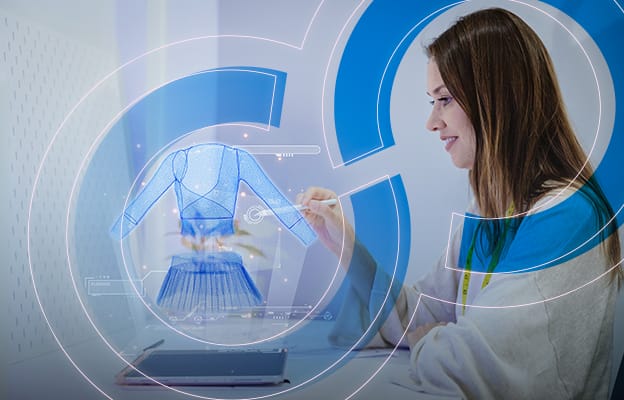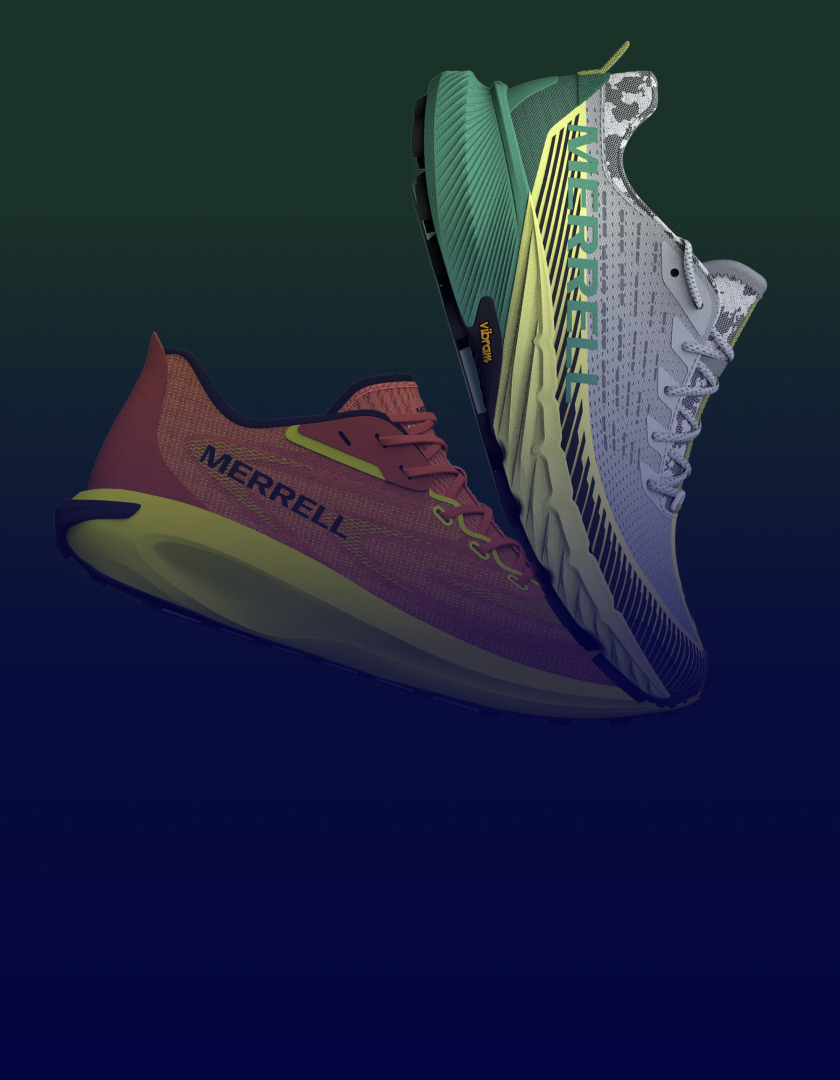Streamlining Fashion Product Development: Tips and Best Practices

From concept to the final product on the store shelf, every stage of the product development process plays a critical role in determining the success of a collection or a brand’s overall market presence.
In today’s unpredictable fashion markets, the success of products has never been more tenuous. According to McKinsey’s State of Fashion 2025 report, only 20% of surveyed fashion professionals expected “improvements in consumer sentiment” for the year and nearly 40% expect the industry to perform worse than it did in 2024.
With challenges ranging from global supply chain disruptions to the increasing emphasis on sustainability, mastering product development—and long-term success—is more complex than ever.
Brands that excel in product development do more than just bring designs to life—they create strategies that align with consumer expectations, market trends and environmental considerations. This requires a deep understanding of materials, manufacturing processes and the technologies that can drive efficiency and creativity.
In this guide, we’ll explore the key stages of product development in the fashion industry, offering advanced insights and actionable strategies to refine processes, foster innovation and maintain a competitive edge. Whether you’re a seasoned professional or looking to elevate your development strategies, this guide provides a roadmap to navigate the challenges and opportunities in fashion product development today.
By harnessing technology, collaborating effectively across teams and prioritizing sustainability, brands can turn their visions into high-quality, market-ready products that resonate with their audiences.
Let’s dive into the strategies, tools and techniques that define successful product development in fashion and apparel.
Conceptualizing Fashion Products
Conceptualizing and ideating a fashion collection is where creativity meets strategy. It’s the stage where raw ideas are molded into a cohesive vision that aligns with market trends, brand identity and business goals. For brands aiming to stand out in a competitive market, this phase is critical to setting the tone for the collection’s success.
Start with Market Research and Trend Analysis
Effective ideation begins with data. Understanding what your target audience wants, their evolving preferences and how broader cultural shifts influence their buying behavior provides the foundation for a collection that resonates. Utilize tools like trend forecasting platforms, social media analytics and consumer surveys to pinpoint emerging patterns and themes.
- Example: If data shows increased demand for sustainable fashion, this insight can guide your selection of eco-friendly materials and designs.
- Actionable Tip: Combine global trends with localized insights to create collections that feel fresh and relevant in key markets.
Anchor Creativity with a Strategic Vision
While creativity drives ideation, grounding it in strategy ensures the collection aligns with the brand’s positioning. Develop a clear creative brief that outlines the collection’s purpose, target audience, aesthetic and commercial objectives. This document becomes the north star for designers, ensuring their creativity translates into marketable designs.
Leverage Collaborative Ideation
The best collections emerge from collaboration. Involve cross-functional teams, from design to marketing, in the ideation process to ensure multiple perspectives inform the collection. Collaborative ideation tools, such as digital whiteboards or PLM platforms, can streamline brainstorming sessions and capture every idea in one accessible space.
Stay Agile in Iteration
Flexibility is essential during ideation. Ideas that seem promising initially may require adjustments as new insights emerge. Establish a feedback loop that allows teams to refine concepts without stalling the process.
The conceptual phase isn’t just about inspiration—it’s about creating a strong foundation for the collection’s lifecycle.
A thoughtful and data-informed approach to ideation ensures that your designs not only capture attention but also deliver on business objectives, positioning your brand for long-term success in an ever-evolving market.
Prototyping and Design Iteration
Prototyping and design iteration form the bridge between ideation and production, where concepts transform into tangible products. This phase is crucial for refining designs, ensuring functionality and aligning with both brand standards and consumer expectations. For fashion brands, perfecting this stage can significantly impact time-to-market, cost efficiency and overall product quality.
The Role of Digital Prototyping
Digital prototyping has revolutionized the fashion industry, offering designers and developers the ability to visualize and test products before a single thread is sewn. By leveraging 3D modeling software integrated with Product Lifecycle Management (PLM) tools, teams can rapidly create virtual samples. These prototypes allow for:
- Faster Iterations: Adjust patterns, colors, or textures instantly without the need for physical samples.
- Cost Savings: Reduce material waste by minimizing the number of physical prototypes required.
- Enhanced Collaboration: Share digital prototypes with stakeholders globally, ensuring input from key teams in real-time.
Streamlining Feedback Loops
Effective design iteration depends on structured feedback loops. Instead of relying on sporadic input, establish regular checkpoints where cross-functional teams—designers, product managers and suppliers—evaluate prototypes against the creative brief and market objectives. Clear communication and centralized platforms like PLM ensure feedback is actionable and tracked for accountability.
Testing for Functionality and Market Fit
Aesthetic appeal is essential, but functionality cannot be overlooked. Prototypes must be tested for wearability, durability and compliance with industry standards. For instance, garments designed for activewear require rigorous testing for stretch and moisture-wicking properties. Meanwhile, aligning with market demands ensures that the final product resonates with your target audience.
Why It Matters
Prototyping and design iteration are where brands move beyond inspiration to innovation. By leveraging technology and collaborative feedback, fashion companies can refine their products with precision, ensuring they meet both creative aspirations and market expectations. A well-executed prototyping phase is not just a step—it’s a competitive advantage in today’s fast-paced fashion landscape.
Materials, Sourcing and Production Planning
Materials, sourcing and production planning are the backbone of any successful fashion product development cycle. This phase demands meticulous attention to detail to balance quality, sustainability and cost-effectiveness while meeting production timelines and aligning with market expectations.
Selecting the Right Materials
Choosing the right materials is critical for both the design vision and the product’s performance. Advanced fashion brands are prioritizing sustainable and innovative fabrics like recycled polyester, organic cotton and bio-based textiles. This not only appeals to eco-conscious consumers but also reduces environmental impact. When selecting materials, consider:
- Durability and Functionality: Ensure the fabric aligns with the product’s intended use (e.g., moisture-wicking for activewear or thermal properties for outerwear).
- Supply Chain Viability: Partner with reliable suppliers who can deliver consistent quality at scale.
- Market Trends: Stay attuned to emerging consumer preferences, such as gender-neutral or multifunctional fabrics.
Strategic Sourcing
Sourcing is more than procurement—it’s about building partnerships that align with your brand values and operational needs. Transparent supply chain practices foster trust and reduce risks, especially in an era of heightened consumer scrutiny. Tools like PLM software help track certifications, supplier compliance and lead times, ensuring seamless communication across the supply chain.
Efficient Production Planning
Production planning transforms design concepts into market-ready products. Advanced brands leverage data-driven insights to forecast demand and optimize production runs. Strategies for success include:
- Capacity Planning: Align production schedules with supplier capabilities to avoid delays.
- Risk Mitigation: Diversify sourcing to reduce dependency on a single supplier or region.
- Sustainability Goals: Incorporate circularity by planning for material reuse or recycling.
By integrating cutting-edge tools and forward-thinking strategies, brands can streamline materials, sourcing and production planning. This ensures not only a smooth path to market but also long-term profitability and relevance in the competitive fashion industry.
Marketing and Launch Strategies
A successful fashion collection isn’t just about great designs—it’s about creating a compelling narrative that resonates with your target audience and drives engagement across channels. Effective marketing and launch strategies bridge the gap between your vision and market success, positioning your products for maximum impact.
Crafting a Story-Driven Campaign
Today’s fashion consumers seek more than just products—they crave stories that connect emotionally and align with their values. Develop a campaign that highlights your collection’s unique attributes, such as sustainable materials, cultural inspiration, or cutting-edge functionality. Use storytelling to elevate your brand, showcasing how your collection fits into your customers’ lifestyles.
- Highlight Sustainability: Showcase eco-friendly practices, from materials to packaging.
- Emphasize Exclusivity: Limited-edition collections or pre-launch teasers can create buzz and urgency.
- Leverage Influencers: Collaborate with fashion influencers who align with your brand’s identity to amplify reach and credibility.
Multi-Channel Launch Tactics
A strategic, multi-channel approach ensures your collection reaches the right audience at the right time. Fashion brands should prioritize omnichannel marketing to connect with consumers both online and offline. Key tactics include:
- Social Media Campaigns: Use platforms like Instagram and TikTok to showcase behind-the-scenes content and launch countdowns.
- E-Commerce Optimization: Ensure your website delivers a seamless shopping experience, including detailed product descriptions, high-quality imagery and easy navigation.
- Retail Activation: Host in-store events, pop-ups, or trunk shows to offer experiential engagement.
Measuring Success
Post-launch, use analytics to measure campaign effectiveness. Metrics like website traffic, conversion rates and customer feedback provide insights for refining future strategies. By continuously optimizing, you’ll ensure each launch builds momentum for your brand.
Strategic marketing and well-executed launches turn collections into success stories, building brand loyalty and securing your place in the competitive fashion market.
How PLM Software Elevates Fashion Product
Product Lifecycle Management (PLM) software revolutionizes fashion product development by streamlining processes, enhancing collaboration and providing end-to-end visibility across the entire lifecycle of a collection. In an industry as fast-paced and complex as fashion, PLM serves as the backbone for creating efficient, innovative and sustainable workflows.
Benefits of PLM for Fashion Product Development
PLM software addresses some of the most pressing challenges in fashion product development, offering substantial benefits at every stage:
- Centralized Data Management: PLM acts as a single source of truth, consolidating all product-related data, from design files to materials and supplier details, ensuring accuracy and reducing redundancies.
- Enhanced Collaboration: Teams across design, sourcing, production and marketing can access real-time updates, fostering better communication and quicker decision-making.
- Accelerated Time-to-Market: By streamlining workflows and automating repetitive tasks, PLM reduces lead times and ensures collections hit the market faster.
- Cost Optimization: Improved visibility into costs and resource allocation enables brands to avoid unnecessary expenses and stay within budget.
- Sustainability Tracking: PLM provides tools for tracking sustainable practices, such as material sourcing and production impact, aligning with eco-conscious consumer demands.
Best Practices for Leveraging PLM
To maximize the potential of PLM, brands should adopt these best practices:
- Integrate Early: Introduce PLM during the conceptualization stage to ensure all stakeholders are aligned from the outset.
- Customize Features: Tailor the software to meet specific needs, such as managing seasonal collections or tracking material compliance.
- Train Teams Thoroughly: Ensure all users are equipped with the knowledge to navigate the platform effectively and utilize its full range of features.
- Measure ROI: Use key performance indicators (KPIs) like time-to-market reduction, cost savings and error elimination to gauge success.
PLM as a Game-Changer in Fashion
PLM is more than a tool—it’s a strategic advantage. By connecting every stage of the product lifecycle, from design ideation to end-of-season markdowns, PLM empowers brands to operate with precision, agility and innovation. It enables brands to anticipate market trends, reduce waste and deliver collections that resonate with consumers.
For fashion brands looking to scale efficiently while maintaining quality and sustainability, PLM software is an essential investment in future success.
Elevate Your Product Development Game with Centric Software
Whether you’re scaling production, launching new collections, or adopting sustainable practices, Centric Software® transforms challenges into opportunities for growth and innovation.
Centric PLM empowers brands, retailers and manufacturers to take their product development processes to the next level. From streamlining design workflows and optimizing materials sourcing to enhancing sustainability and reducing time-to-market, Centric PLM provides the tools and insights needed to stay competitive in today’s demanding market.









